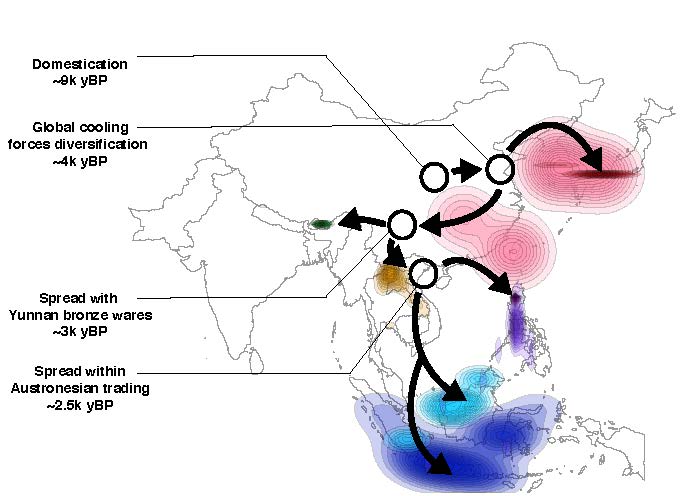A trove of ancient plant remains excavated in Kenya helps explain the history of plant farming in equatorial eastern Africa, a region long thought to be important for early farming but where scant evidence from actual physical crops has been previously uncovered.
Tag: Archeology
Prehistoric mobility among Tibetan farmers, herders shaped highland settlement patterns, cultural interaction, study finds
New research from Washington University in St. Louis and Sichuan University in China explores how and why ancient communities built social relationships and cultural identities across the extreme terrain in Tibet.
Archaeologists discover world’s oldest wooden structure
Half a million years ago, earlier than was previously thought possible, humans were building structures made of wood, according to new research by a team from the University of Liverpool and Aberystwyth University.

University of Kentucky researcher offers solution to coal conundrum on famous pirate shipwreck
A researcher at the University of Kentucky is helping solve a mystery on the coast of North Carolina: Where did coal found on the shipwrecked Queen Anne’s Revenge come from? About 300 years ago, a band of pirates captured a French slave ship. Among those pirates was a man named Edward Thatch (also spelled as Teach) who would be better known as Blackbeard.
Archaeologists uncover early evidence of brain surgery in Ancient Near East
Archaeologists know that people have practiced cranial trephination, a medical procedure that involves cutting a hole in the skull, for thousands of years.
Ancient DNA Analysis Sheds Light on the Early Peopling of South America
Using DNA from two ancient humans unearthed in two different archaeological sites in northeast Brazil, researchers have unraveled the deep demographic history of South America at the regional level with some surprising results. Not only do they provide new genetic evidence supporting existing archaeological data of the north-to-south migration toward South America, they also have discovered migrations in the opposite direction along the Atlantic coast – for the first time. Among the key findings, they also have discovered evidence of Neanderthal ancestry within the genomes of ancient individuals from South America. Neanderthals ranged across Eurasia during the Lower and Middle Paleolithic. The Americas were the last continent to be inhabited by humans.
A 10,000-Year-Old Infant Burial Provides Insights Into the Use of Baby Carriers and Family Heirlooms in Prehistory
If you’ve taken care of an infant, you know how important it is to find ways to multitask. And, when time is short and your to-do list is long, humans find ways to be resourceful—something caregivers have apparently been doing for a very, very long time.
Climate change reveals unique artefacts in melting ice patches
One day more than 3000 years ago, someone lost a shoe at the place we today call Langfonne in the Jotunheimen mountains. The shoe is 28 cm long, which roughly corresponds to a modern size 36 or 37. The owner probably considered the shoe to be lost for good, but on 17 September 2007 it was found again – virtually intact.
Tooth isotopes offer window into South Australia’s early colonial history
Published in Australian Archaeology, the new research involved isotope analysis of teeth excavated from graves to determine how many people buried were born in South Australia or Britain, as part of scientific efforts by Flinders University experts deploying this technique for the first time in the state.
‘Digging’ Into Early Medieval Europe with Big Data
During the middle of the sixth century CE a dramatic transformation began in how the people of western Europe buried their dead.
Human environmental genome recovered in the absence of skeletal remains
Ancient sediments from caves have already proven to preserve DNA for thousands of years. The amount of recovered sequences from environmental sediments, however, is generally low, which difficults the analyses to be performed with these sequences. A study led by Ron Pinhasi and Pere Gelabert of the University of Vienna and published in Current Biology successfully retrieved three mammalian environmental genomes from a single soil sample of 25,000 years bp obtained from the cave of Satsurblia in the Caucasus (Georgia).
National Geographic Society grant to fund research into Easter Island
Binghamton University anthropologists Robert DiNapoli and Carl Lipo received a $60,280 grant from the National Geographic Society’s Committee for Research and Exploration to explore how ancient populations managed freshwater scarcity.

Global Cooling Event 4,200 Years Ago Spurred Rice’s Evolution, Spread Across Asia
A major global cooling event that occurred 4,200 years ago may have led to the evolution of new rice varieties and the spread of rice into both northern and southern Asia, an international team of researchers has found.